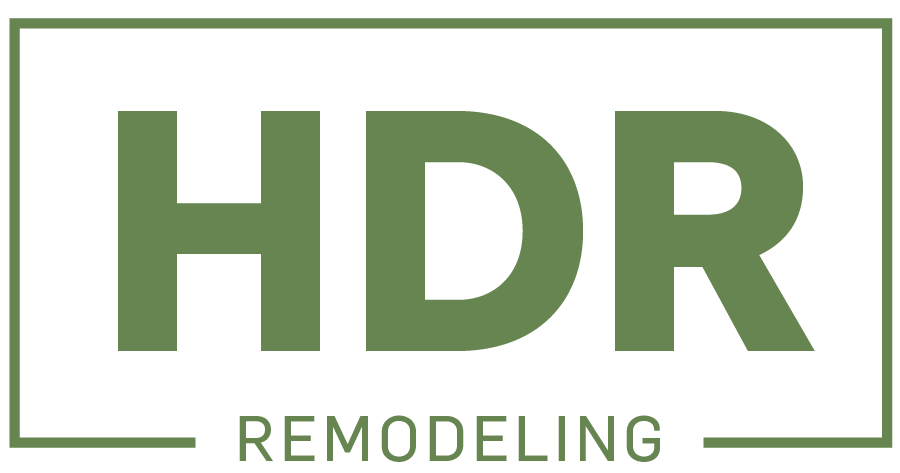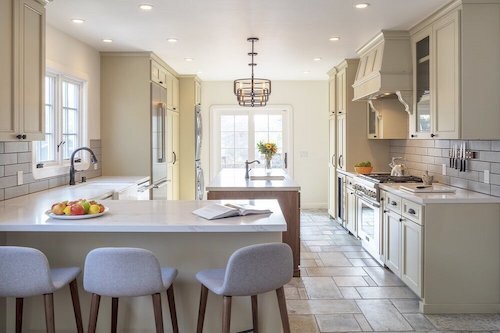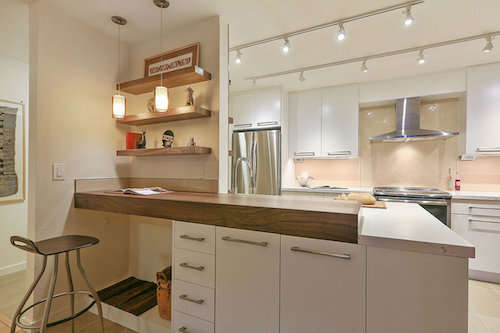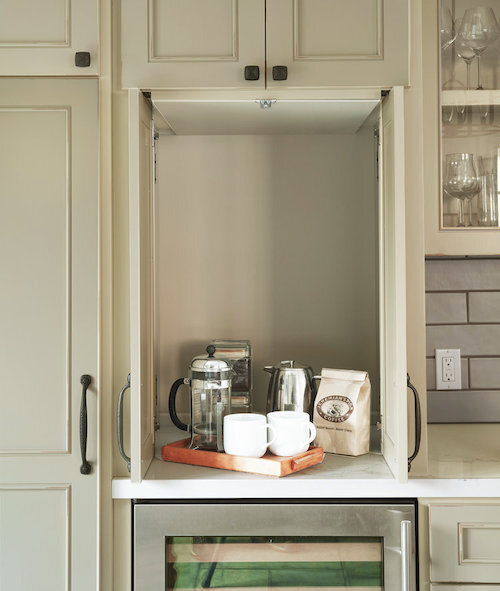Kevin Mond, Head of Business Development and Design at HDR Remodeling, recently shared some of his thoughts on how to craft a dream kitchen in a recent webinar. Whether you're planning a refresh or a complete kitchen remodel, our Design Build approach will help to guide you through the process every step of the way.
The Big Picture
The first step in any kitchen remodel is to examine your existing space. Take a look at your kitchen and determine what you like and dislike about the space. Take a moment to think about how you move around and use your kitchen. Are you avid chefs or do you prefer take out?
Kitchens are not just for cooking anymore. Integrating dining and workspace into your new kitchen design can make the space multi-functional. Your kitchen design can include a workspace to act as the home’s command center and provide room for kids and adults to work at home. Many kitchens also include comfortable space for dining. This is the time to think about how and where you enjoy eating. Would you prefer casual dining at a counter or eating at a table or breakfast nook?
Island vs Peninsula - This custom kitchen has both
Sketch Out Your Kitchen Design
The next step is to determine the most functional use of space. It often helps to get out a piece of paper and pencil and start the kitchen design process yourself. Make a rough sketch of the kitchen and think about how the space works and any problems you’d like to solve. Doing your homework before you engage with a Design Build contractor can save time and money.
Anything is possible in a kitchen remodel if money is no object. However, most homeowners have a budget in mind and moving plumbing or making structural changes will require more complex design, permitting, and more flexible budgets. Maintaining some existing elements such as the location of sink and dishwasher can save you money.
Carve out space to work from home with a custom command center.
Taking Shape
There are three common kitchen layouts: U-shaped kitchens, I-shaped kitchens and L-shaped kitchens.
U-Shaped Kitchen
The most common kitchen layout is the U-shaped kitchen. This versatile kitchen layout is functional and great for busy cooks. The workspace surrounds the cook for maximum efficiency and keeps everything within easy reach. This layout is also great for entertaining.
U-Shape Kitchen Layout
I-Shaped Kitchen
In an I-shaped kitchen layout, the appliances and work surfaces are concentrated on a single wall. This simple kitchen design is great for small spaces and the biggest benefit is its cost effectiveness and functionality. The challenges of an I-shape kitchen include limited work and prep space, making it challenging for multiple cooks to operate at the same time.
I-Shape Kitchen Layout
L-Shaped Kitchen
An L-shaped kitchen works best within a large kitchen footprint. It is the most ergonomically correct kitchen design and is perfect for a family with multiple chefs in the kitchen at the same time. Oftentimes, if space allows, an island can be incorporated in the center of the kitchen for more workspace or casual dining.
This kitchen has an integrated peninsula in a “double L” configuration
Space Makers
Kitchen storage can be customized to accommodate your needs. Avid bakers may want a pop-up shelf for a Kitchen Aid mixer. Coffee drinkers will appreciate a built-in espresso machine or coffee station. Adding a wine cooler or beverage fridge frees up refrigerator space and adds a high-end feel.
Kitchen ergonomics should always be a factor in your design. Adding drawers or pull-out shelves in base cabinets make them much more accessible and using open shelving gives you easy access to everyday items. Consider wall ovens instead of a range which can be safer to access when transferring hot items. All these elements can make a kitchen more comfortable and easier to work in.
Materials Matter
It is important to choose your materials wisely. HDR Remodeling specializes in integrating sustainable and "eco-friendly" products and materials that can be sourced locally. For example quartz countertops are a chic, affordable, and low maintenance alternative to marble countertops. Some features to consider are:
Built-in containers for recycling and compost
Natural lighting to save energy
Radiant heated floors
Energy efficient appliances. Also consider donating old appliances to organizations like Habitat for Humanity ReStore.
Merge Indoor Outdoor Kitchens
We are so fortunate to live in the Bay Area with a mild climate year-round. One way to make your home feel more spacious and gain usable space is to integrate your indoor and outdoor spaces. Consider maximizing your kitchen by creating a flow to an outdoor yard, patio, balcony or garden. This creates space for entertaining and an opportunity for a garden-to-table experience. You can even expand your options by including an outdoor grilling space or adding a full outdoor kitchen.
Outdoor kitchens can be as simple as a well-designed spot for your grill. Or you can create a complete outdoor kitchen including built-in grill, fridge, sink and prep space. You can even incorporate specialty appliances to suit your unique cooking style such as a smoker, pizza oven, wok or tandoor oven.
Integrated accordion doors and no-threshold flooring erase the lines between indoors and outdoors
Some important things to consider when designing an outdoor kitchen are:
Creating a focal point
Using natural materials and finishes that blend into a natural environment
Thermal comfort is key. Add shade and sun protection and integrate heating and cooling methods like a fan to circulate air.
Add ambient lighting so you can enjoy your space after dark.
Whether you’re expanding your kitchen to the outdoors or making the best use of your existing space, contact us to see how we can craft your dream kitchen.
Want to hear more in the webinar? Watch the webinar here.
Make sure to subscribe to our mailing list in the footer to receive invitations to future events and more.









